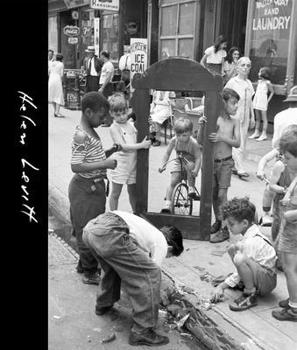Helen Levitt
Over six decades, Helen Levitt (1913-2009) explored the streets of her native New York City with a handheld camera. Influenced by Henri Cartier-Bresson, she found inspiration in the theater and spontaneity of the street, capturing everyday moments in urban life and forging a distinct visual language from her private observations. Levitt's eye was drawn to fleeting incidents of tenderness, mischief, and tension between communities and strangers in the city: children drawing in chalk on the sidewalks, the elderly chatting on their stoops, and workers on the subway. Exuding a keen warmth and sensitivity for human gesture and movement, her photographs capture, in James Agee's words, the "pure spontaneity of true folk art."
The first of its kind to draw from Levitt's complete archive, this ambitious publication showcases her entire output. It not only includes her best-known photographs but also features rarely seen early works from her first year using a Leica and all fifty works from the original edit of her classic 1965 photobook A Way of Seeing, with record prints preserved by Levitt herself.
Essays by a range of scholars and specialists home in on key thematic, technical, and biographical aspects of Levitt's life and work, including an examination of the photos she took during her trip to Mexico in 1941, her innovative use of color in the 1950s, and her late work from the 1980s, providing an authoritative insight into one of the most influential photographers of the twentieth century.





